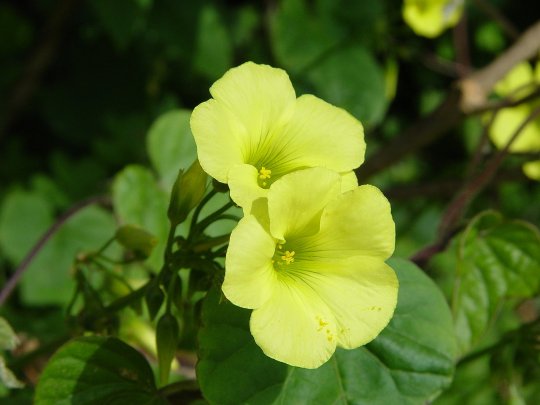#Oxalis pes-caprae
Text


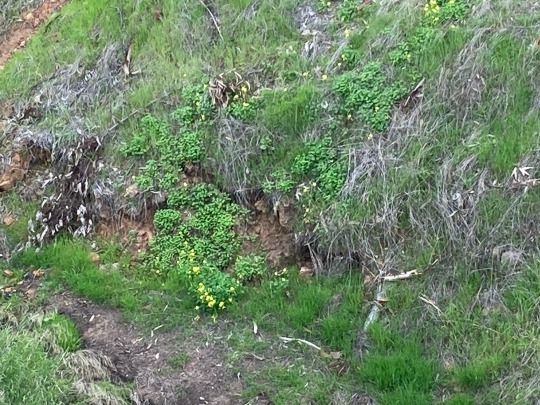
2 notes
·
View notes
Text
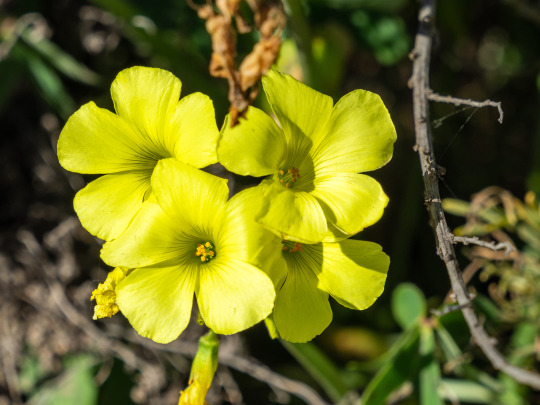
Bermuda buttercup, Cambria Shores
#wildflowers#nature#nature photopragpy#bermuda buttercup#Oxalis pes-caprae#california#california coast#travel#photography#my photography#original photography#photographers on tumblr
23 notes
·
View notes
Link
4 notes
·
View notes
Text
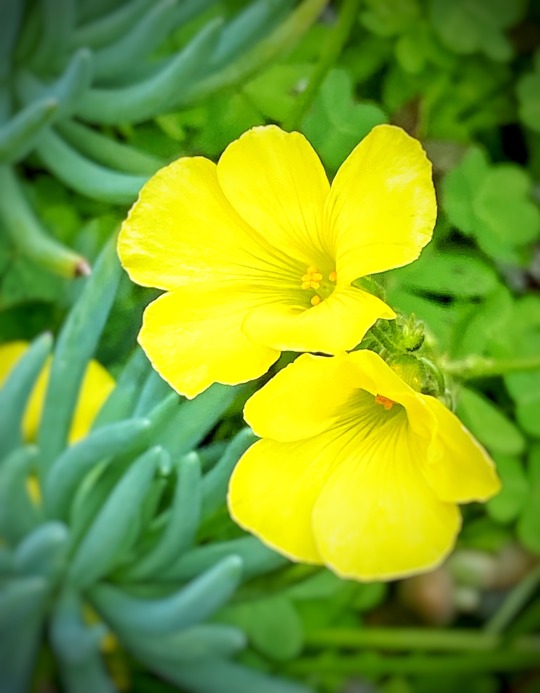
近所の庭先で咲いていた、
「オオキバナカタバミ(大黄花酢漿草)」の花。
別名:キイロハナカタバミ(黄色花酢漿草)。
欧文名:Oxalis pes-caprae
18 notes
·
View notes
Text
The name oxalic acid is derived from one of its sources in the biological world, namely, plants of the genus Oxalis, one of which is the soursob (sourgrass) plant, O. pes-caprae (figure 23.2).
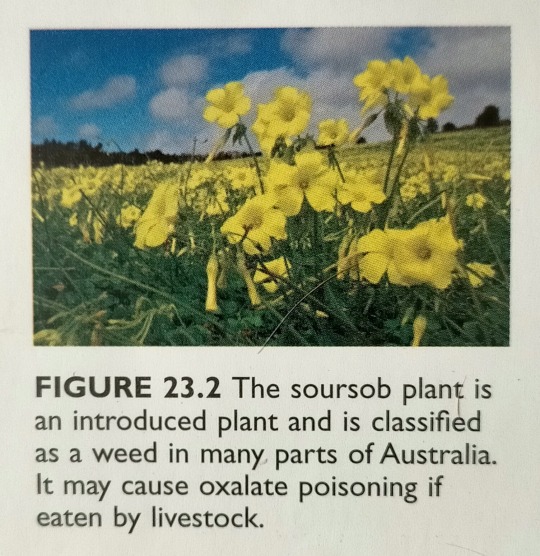
"Chemistry" 2e - Blackman, A., Bottle, S., Schmid, S., Mocerino, M., Wille, U.
#book quotes#chemistry#nonfiction#textbook#oxalic acid#oxalis#soursob#sourgrass#oxalis pes caprae#australia#oxalate poisoning#livestock#yellow#yellow flowers
2 notes
·
View notes
Text
Poll time!
Southern Italian, Mediterranean dwellers and general public!
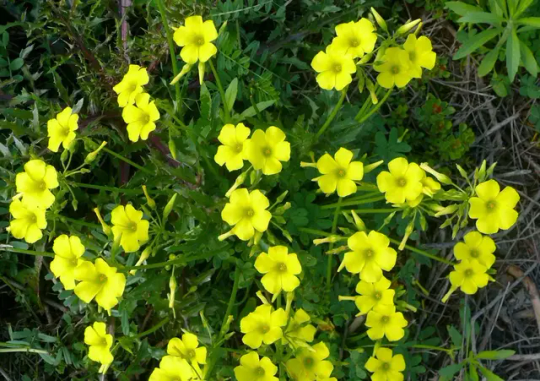
Acetosella gialla (Oxalis pes-caprae)
N.b. when I say eat/suck I mean that you pick the flower as you walk around and suck the juice from the stalk/stem
Historical references under the cut!
Among the many species of weeds along the Mediterranean basin, Oxalis pes-caprae, better known also by the term yellow sorrel, it is one of the most widespread, above all along central-southern Italy, Sicily and Sardinia. It is a weedy botanical species, of South African and Namibian origin (therefore of southern Africa), belonging to the Asteraceae family.In fact we need to remember that, although today it is widespread throughout the Mediterranean, is not a plant native to our regions.
According to some historical sources, its introduction to the Mediterranean took place at the beginning of 1800, on the island of Malta, as an ornamental plant, by a botanical admirer of Anglo-Saxon origins, coming from the South African colonies of the Cape, where today's City of Cape Town is located. This first plant reached Father Giacinto, a local botanist friar, who in fact mentions it in one of his indexes of botanical collections. After being planted in several places on the island of Malta, the plant spread massively within a few years, starting from the Maltese territory and Gozo.
Shortly thereafter, Oxalis pes-caprae began to invade Sicily and Sardinia as well, as an invasive weed species, to the detriment of the local species, which were quickly supplanted by this plant, originally from southern Africa. The characteristics of the species. This plant is very particular, as it has a bulb which is the only part of the plant that remains alive all year round. Its reproduction occurs vegetatively. Each root originates from a central bulb. From this arise numerous small bulbs which, when detached, generate a new plant.
Lacking cross-pollination, all the yellow sorrels around Italy are clones of those few plants that arrived at Padre Giacinto more than two centuries ago.
The bulbils remain dormant throughout the summer and germinate in late autumn, after the arrival of the rains. Flowering takes place in winter, between the end of December and February, continuing until spring when the aerial part disappears, closing the reproductive cycle. Medicinal properties and soil protection.
In the past it was believed that the plant had important medicinal virtues, through the use of its roots and leaves. Even today, in herbal medicine, the leaves and roots of this plant are used in decoctions for their refreshing, diuretic, astringent and anti-scurvy power. The juice of the centrifuged leaves is useful for heartburn and ulcers.
Oxalis pes-caprae still acts as a protection for the soil (even if in the long run it continues to deplete it of nutrients), limiting the erosive damage produced by winter storms on plowed land and reducing erosion or excessive exposure to sunlight and wind, which would further damage the soil.Furthermore, flowering en masse in late winter, it ensures precious nectar for pollinators, in a period in which there are not many blooms.
Translation from:
27 notes
·
View notes
Text

Bermuda Buttercup - Azedas (Oxalis pes-caprae)
Cruz Quebrada/Portugal (14/03/2023)
[Nikon D7100; ∑150mm F2.8 EX DG OS HSM APO Macro; Peak Design travel tripod; 1/200s; F20; 200 ISO]
16 notes
·
View notes
Text

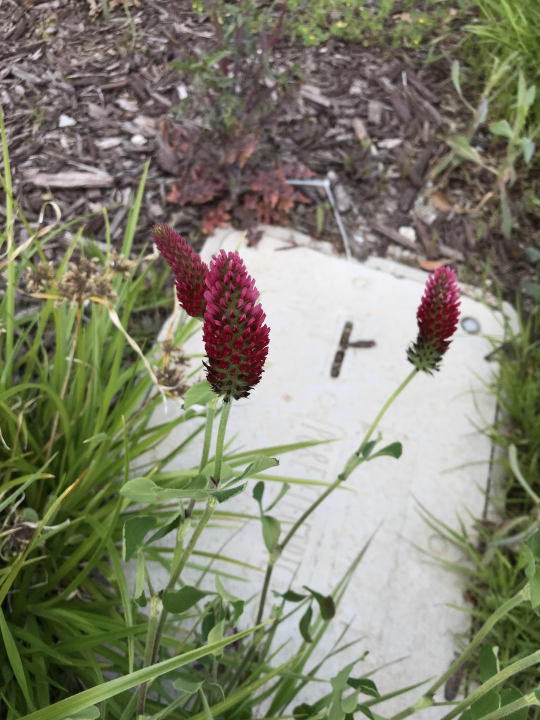
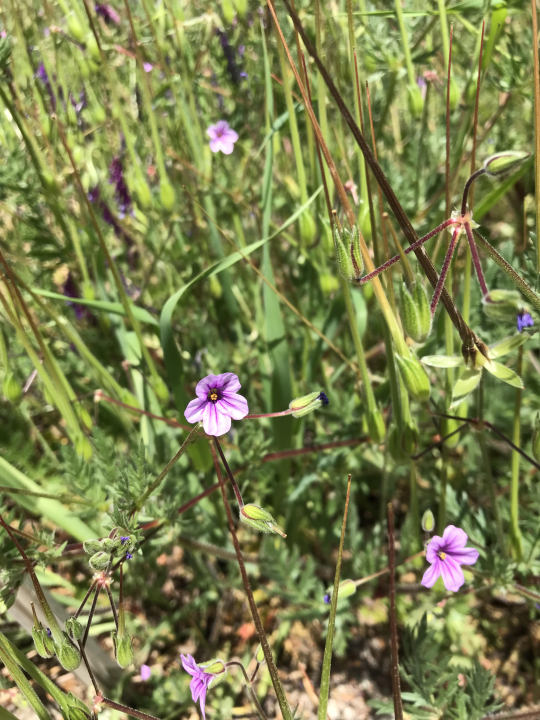
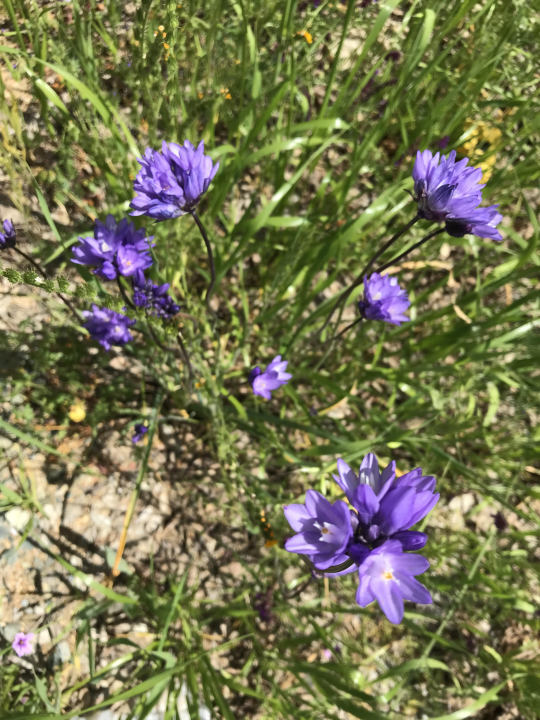

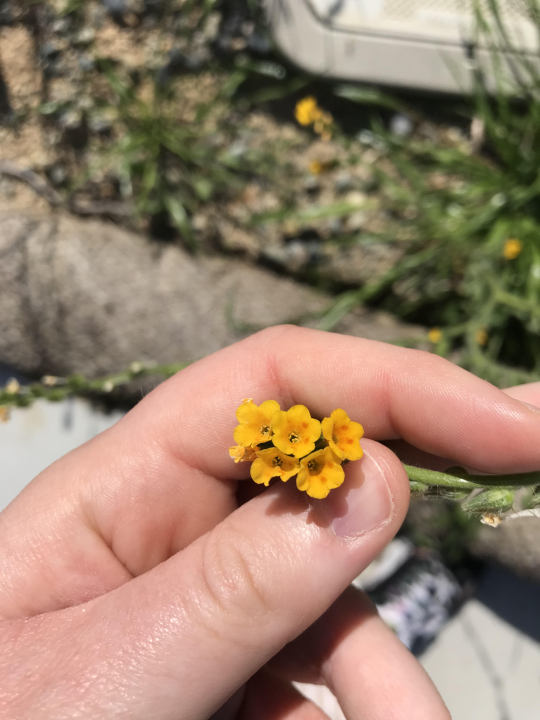
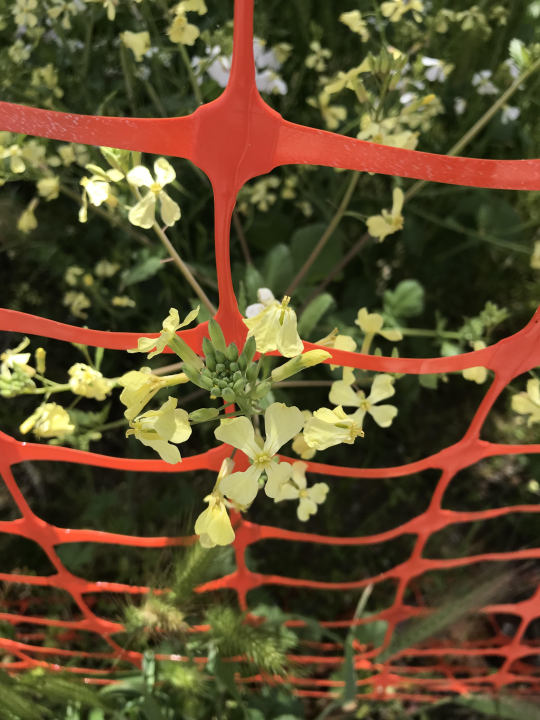
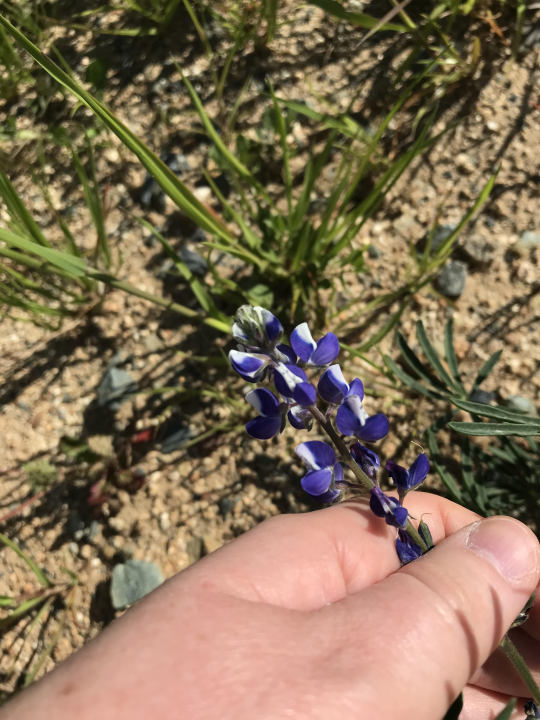
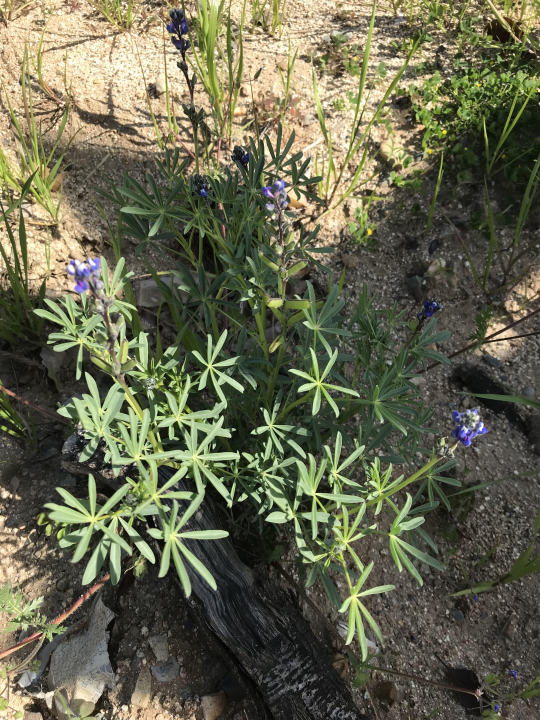
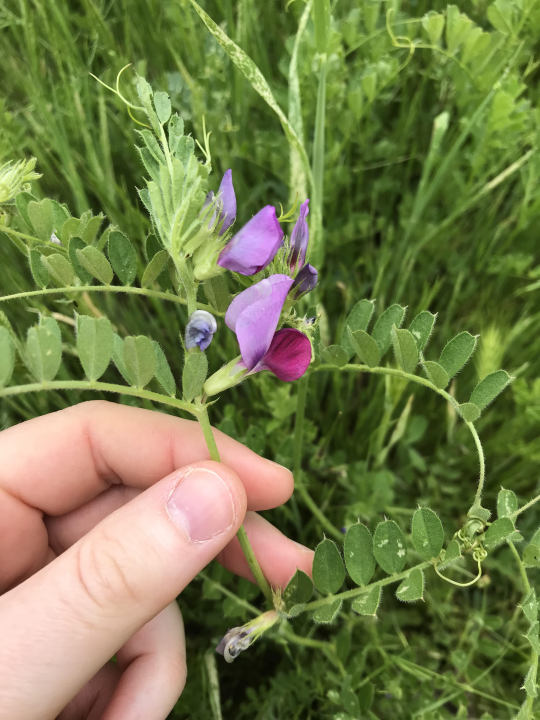
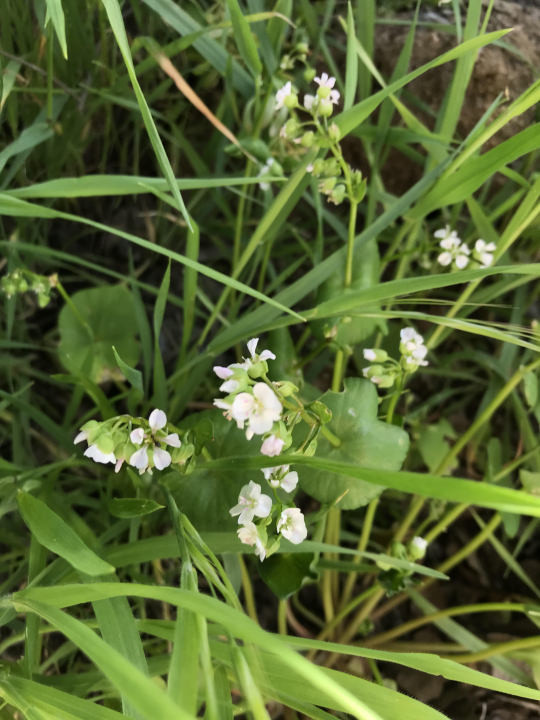

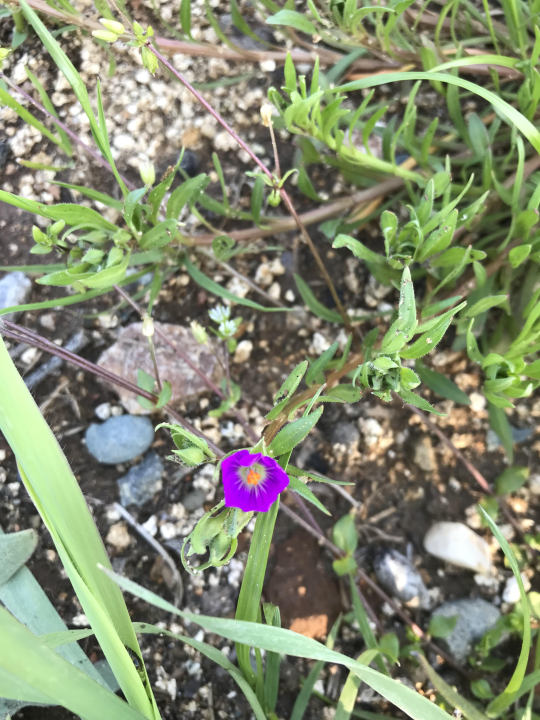
Flowering 'Weeds' in my Neighborhood
Hello and welcome to my informal tour of some of the flowers in my California neighborhood. I just wanted to identify them when I got home so I made this post. We tend to take these plants for granted but I wanted to learn more about them. Forgive the photo quality, my phone is a potato but I am upgrading it soon. (Also I was being kind of lazy with these photos, since it was just for IDing and not for looks)
1.) Yellow Woodsorrel (Oxalis stricta or Oxalis corniculata)
These itty bitty yellow flowers (and clover-like leaves) often found in lawns are apparently woodsorrels, in the genus Oxalis. The flowers are around the same size as Scarlet Pimpernell (Anagallis arvensis), another little flower often found growing in lawns around here. Plants in this genus are edible, apparently, and have a nice sour tanginess to them. All parts are edible and can be eaten raw or cooked, and are nice in salads, I'm told.
It seems the plants in this genus have a wide range of flower sizes, because this genus also includes Oxalis pes-caprae, which has the same clover-like leaves, but it has yellow flowers that are ~1 - 1.5 inches large, which grow on long stalks. This species is known colloquially as Sourgrass where I'm from, and as a kid I often picked the flowers to chew on the sour stems. Plants of this genus are often invasive here, but there are also lots that are native to California.
2.) Crimson Clover (Trifolium incarnatum) - Invasive
Often used for erosion control (even though it out-competes other plants, including natives), for feeding livestock, or as a nitrogen-fixing cover crop. The seeds, sprouts and flowers are edible for humans, too. The red flowers are very beautiful and bees love them.
3.) Long-beaked Storks Bill (Erodium botrys) - Invasive
Another common sight in California yards is the Storks Bill, named after the long, pointy seed pods that look like little spears. My mother passed on the suburban lore to me and my little brother when we were kids, explaining how you can push one of these pointy seed-pods into another one and create a pair of scissors with them. Therefore we referred to these as "scissors plants." However, the plant's seed pods are most interesting when they break open explosively. The seeds that immerge look like sharp little corkscrews that bury themselves in the earth. This plant is reportedly edible, and typically the leaves are eaten when the plant is young. The plant has pretty little pink/purple stripey flowers in the spring.
4.) Blue Dicks (Dipterostemon capitatus) - Native
A beautiful California native wildflower. It has a history of being an important food source for Native Americans. The part eaten was the 'corm,' which is similar to a tuber and also starchy. There is a similar-looking native flower called Forktooth Ookow (Dichelostemma congestum) but this site shares how to tell them apart.
5 - 6.) Common Fiddlenecks (Amsinckia menziesii) - Native
These pretty yellow flowers grow in clusters that gradually unfurl like the neck of a fiddle. Goldfinches love the seeds and it's an important host plant for some insects; its flowers are also valued by pollinators.
They are unpalatable plants to livestock (they have itchy hairs), which is good because they are toxic to livestock if eaten in large amounts. (This typically will not happen unless their feed becomes contaminated with it, since as I mentioned, they dislike eating the plants!) It's probably best that humans don't try to eat this plant, as a result. It's also best to not grab these plants like I did in the photo, haha, because the hairs can irritate skin. (Didn't bother me, but ymmv)
7.) Wild Radish (Raphanus raphanistrum) - Invasive
This plant is in the mustard family (Brassicacea). As you may know, the mustard family is very important to humans, and includes a bunch of cultivated crops (cabbage, broccoli, kale, turnips, radishes, etc). As such, all parts of this plant are very edible, and it has a reportedly peppery taste. It's invasive here in California so you don't need to feel bad about harvesting it. They also hybridize readily with cultivated radish. It's a very hardy plant that has spread all over. You see these guys everywhere, in ditches on the side of the road, etc.
8 - 9.) Lupines/Blue Bonnets [possibly Coulter's lupine (Lupinus sparsiflorus)?]
This genus, the Lupins, is a very large genus and many of the varieties have been cultivated by humans for both food and for looks. However, some varieites are native to California, such as Coulter's lupine. They are very pretty flowers that look similar to pea plants, because it is in the same family (Fabaceae). Lupin beans are edible but need to be processed correctly first, or else they can poison you (the same is true of many popular legumes). The ones that have been bred for eating require less processing.
10.) Common Vetch (Vicia sativa) - Naturalized
Another wildflower in the same Fabaceae family, Vetch also has gorgeous little purple flowers and produces little pea pods too. It's valued as livestock fodder and as green manure/rotation crop, and like the Lupins, its seeds need to be processed properly before humans eat it. The plant is very 'grabby' and will use plants nearby to help prop it up as it grows. So, if you have something else in your garden, you might need to pull out vetch if it's grabbing your plants.
11.) Miner’s Lettuce/Spring Beauties/Winter Purslane (Claytonia perfoliata) - Native
This native plant has big, cronchy leaves that I'm told taste excellent in salads. They tend to grow after a good rain, during winter or early spring, in damp, shady areas. The plant had been used as food by Native Americans for a long time, and when white people arrived in droves in California for the gold rush, they ate it too; thus the name 'Miner's Lettuce.' Their leaves kind of look almost like lily pads, and little white flowers grow in the center. They're quite recognizable once you notice them, and they're very nutritious, apparently.
12.) Burr Clover/Burr Medic (Medicago polymorpha) - Naturalized
Considered useful for livestock fodder, erosion control and soil improvement. It has little yellow flowers and its seed pod is a pokey little burr. It grows very low on the ground, often found in lawns. It's edible, especially the young leaves. The seeds are apparently edible too but there's only one seed per burr and it's rather demanding to gather and process, as you might imagine.
13.) Red Maids (Calandrinia menziesii) - Native
I found this lone little flower among all the other wildflowers around here after the rains. Apparently it's a Red Maid, which used to be considered a type of purselane, but has recently switched families, according to Wiki at least. The greens can be cooked and the seeds toasted.
2 notes
·
View notes
Text
11.
Oxalis pes-caprae is a ridiculously invasive species but I can nearly forgive it because it’s both pretty and tasty.
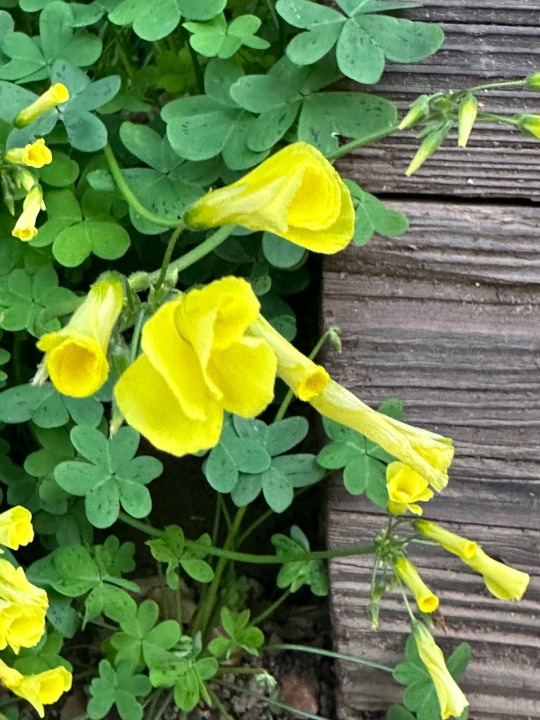
2 notes
·
View notes
Text
ok so i've just come up with an ambitious project i'll probably never do but would love to some day.
info part 1: bc english ivy and oxalis pes-caprae are both invasive plants where I'm at, and both can be used as dyes. The oxalis has highlighter yellow flowers but apparently dyes slightly more orange, and if you use the right mordant it comes out a fantastic golden-orange. The ivy comes out green, and can apparently come out pretty dark if you do it right.
info part 2: if you took a microscope and looked into my heart, you would find, among other things, a field of california golden poppies. which are. ya know. golden-orange flowers with green stems.
so like. i eventually want to try to use ivy and oxalis to dye fabric for a fiber arts project of some kind (quilt probably, but maybe crochet or knitting) showing some of my beloved california poppies. Beauty + home + symbolic = yes pls.
1 note
·
View note
Text

Oxalis pes-caprae, flor del sueño enamorando a una abeja
.
.
#buongiorno #beautifulnature #naturaleza #instagram #picoftheday #pics #verde #green #naturephotography #palabras #macrophoto #amarillo #macrohour
2 notes
·
View notes
Text

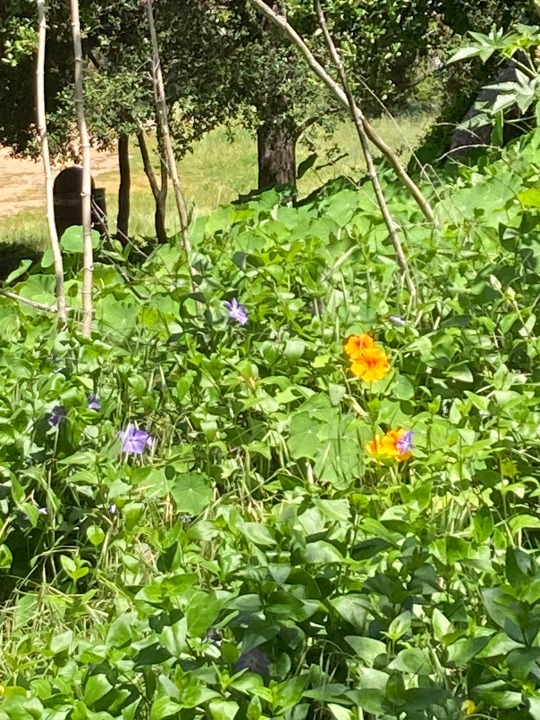



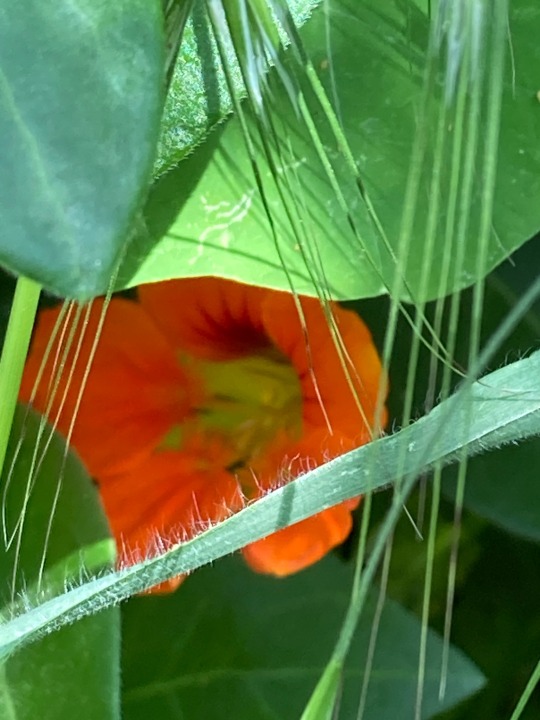
#wildflowers#california landscape#periwinkle#vinca#nasturtium#bermuda buttercup#wood sorrel#oxalis pes-caprae#temescal gateway park#pacific palisades
0 notes
Text
Plant Dye Making Notes - “Lemon” Yellow
(Sorry Tumbr you’re gonna be used for note-taking now. Tag system works too well. Anyone who see this too much and don’t want can block first tag. Just need good list of simple dyes to make because I’m too absent-minded to use any heavy metals and too cheap to buy good-quality commercial dyes.)
Sour-grass/ yellow Oxalis - Oxalis pes-caprae, Oxalis stricta
Dye made from flowers
O. pes-caprae wild in South Africa - check before taking
O. stricta wild in North America - check before taking
Invasive to other places - take as wanted but don’t spread roots!!
Low risk - but toxic if eat large amounts
Colour:
Yellow
Saturated, not muddy
Pale to intense colour
Bright + distinct, not muddy
Can turn golden/ golden brown/ orange / warm brown if adding bicarb soda
Dye process
Petals put in cold water (overnight) or boiling water (30 minutes)
Dye is acidic - bicarb/ alkaline materials will cause fizzing, especially in hot water - careful of splashes/ overflows
Strain out petals before dying fabric
? Possibly can use on un-prepared natural fibres. Possibly can use as ink paint
Good information links:
https://www.annacarolynmeier.com/post/manage-your-blog-from-your-live-site
https://honestlywtf.com/diy/diy-natural-sourgrass-dye/
#Newt's natural dye notes#Newt's yellow dyes#Newt's orange dyes#Newt's brown dyes#fibre art#natural dyes#fabric dyes#remember please be careful taking plants from natural range#my area's invasive plant is somewhere else's vital pollen source!#check if plants are invasive In Your Area before removing them#Oxalis
1 note
·
View note
Photo

made another flower
#art#digital art#flowers#unfinished art#digital painting#Oxalis pes-caprae#these grow near where i used to go school#they like partial sun and a lot of humidity#people would eat the stems#they tasted tangy#another name for this plant was sourgrass#despite the leaf shape#it isnt a clover#oxalis plants are usually confused for clovers#but they arent#theres red ones too but i havent tried those#tw eating things#tw food mention#oh yeah i dug these up once and they have bulbs#the bulbs arent sour though#plants#plant art#botanical illustration
19 notes
·
View notes

